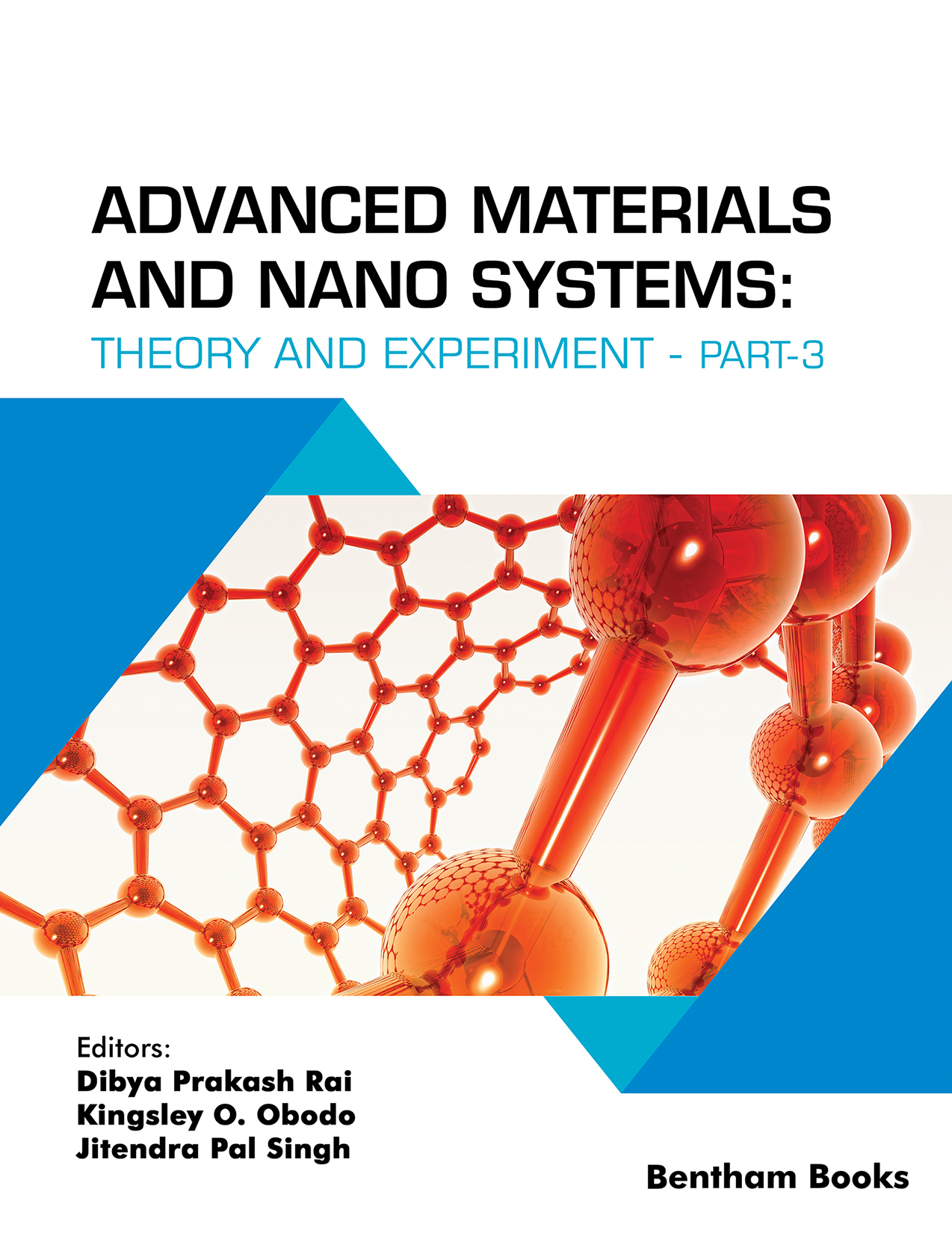First of all, I would like to congratulate Dr. Dibya Prakash Rai for successfully publishing a series of two books, Part 1 & 2, entitled “Advanced Materials and Nano Systems: Theory and Experiment”. Following the success of the previous two books, the editor is motivated for the third edition. I believe this third edition of the book will receive grand success with the support of two dynamic researchers Dr. Kingsley O. Obodo and Dr. Jitendra Pal Singh. The subjects covered in this book range from bulk to nanoscale materials at all applied levels, including some of the most significant and current issues in materials science and nanosystems. It includes introductory chapters, discussions of fundamentals, and problems with in-depth solutions. It covers practically all of the subject matter in the concerned discipline. This book walks readers through using the most basic features or utilities of a program or method. I have had the pleasure of reading several extremely fascinating chapters on the creation of nanoparticles. These chapters concentrate on the potential for reducing environmental pollution and the application of nanosystems for energy harvesting. This book also addresses the existing constraints and difficulties in the development of nanotechnology. It offers a perspective on its potential future development and application in overcoming the current energy crisis, in medicine, and the evolution of digital technology, etc. Over the past 20 years, there has been a tremendous increase in nanotechnology research, which focuses on the science, technology and engineering of nanoscale materials. Nanotechnology has seen a rise in global investment from all sectors, including the public, businesses, governments, institutes, etc. Developed nations, including the United States, Germany, the United Kingdom, France, and others, are working to advance research and development in this crucial sector and creating the scientific understanding required to address queries and worries about the potential effects of this nanotechnology on the environment, health, and safety. In both clinical care and biological research, nanotechnology is gaining importance and prominence. Nanotechnology is anticipated to have a bright future in many facets of medicine, much like other sciences. Nanoparticles can deliver medications into cells to reach illness areas because of their tiny size, which raises local drug concentrations and lowers systemic toxicities. The diversity and promise of nanotechnology products thrill me. Still, I am also conscious of the challenging research required to provide solid answers to important queries regarding their potential effects on human health and the environment. To consider the possible influence on human health that this new and promising kind of material science represents, many of the established assumptions of safety and health must be re-examined, if not modified. Technological advancements have made it possible for humans to view atoms, manipulate them individually, alter their positions one at a time, and utilize them to generate new codes. The challenge was and continues to be, how to handle the system at an atomic scale. This is a challenging undertaking, but it is still feasible. Electronics experts who work with integrated circuits participated in the race for shrinking as well as moving circuitry from micro to submicron levels and reaching ever-closer to the nanoscale. The concept of electronics will need to be completely rethought if researchers ultimately get to the point where a single electron serves as the foundation for electronics (nano-transistor). Since other scientific disciplines like mechanics, optics, chemistry, and biology have also begun to create their nanoworlds, which we now refer to as nanosystems, this evolution is not simply affecting electronics. The silicon airbag's accelerometer in automobiles refers to the example of a mass-produced nanosystem. As far as I am concerned, the application of nanosystems as nanomotors, nanorobots or nano-transistor has not been realized yet. This is because development from lab-scale to commercial-scale will take some time. In actuality, the energy situation is what is most concerning. Rapid energy use eventually threatens the viability of life and may even bring about the end of the contemporary planet one day. As a result, one should seek renewable energy sources or locations where energy may be produced without harming the environment. We may find various promising energy harvesting technologies in the field of materials science, such as thermoelectricity, piezoelectricity, solid-state batteries, etc. Since revolutions and technological advancement do not come naturally to people or communities, it is to be expected that certain worries will accompany these developments. We must be cognizant of the current difficulties and the issues at hand. I want to invite the readers to continue reading this book. Let's explore this new universe in all the forms of materials science while maintaining the realism of an engineer and the creative progress.
Victor Sunday Aigbodion
Department of Metallurgy and Materials Engineering
Faculty of Engineering, University of Nigeria
Nsukka, Nigeria

